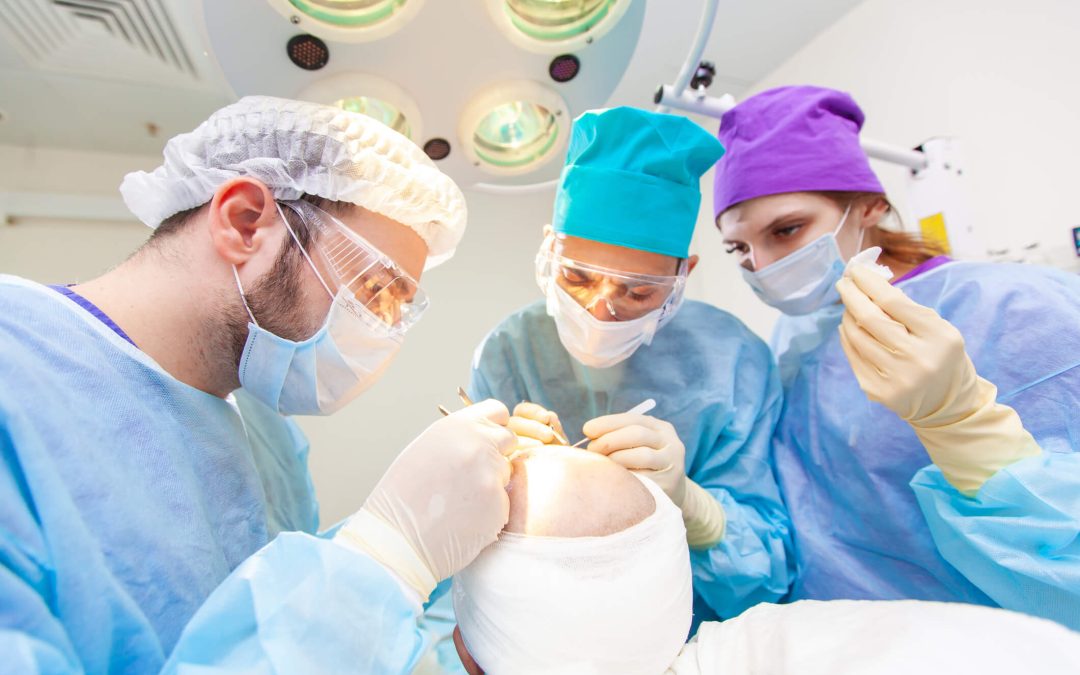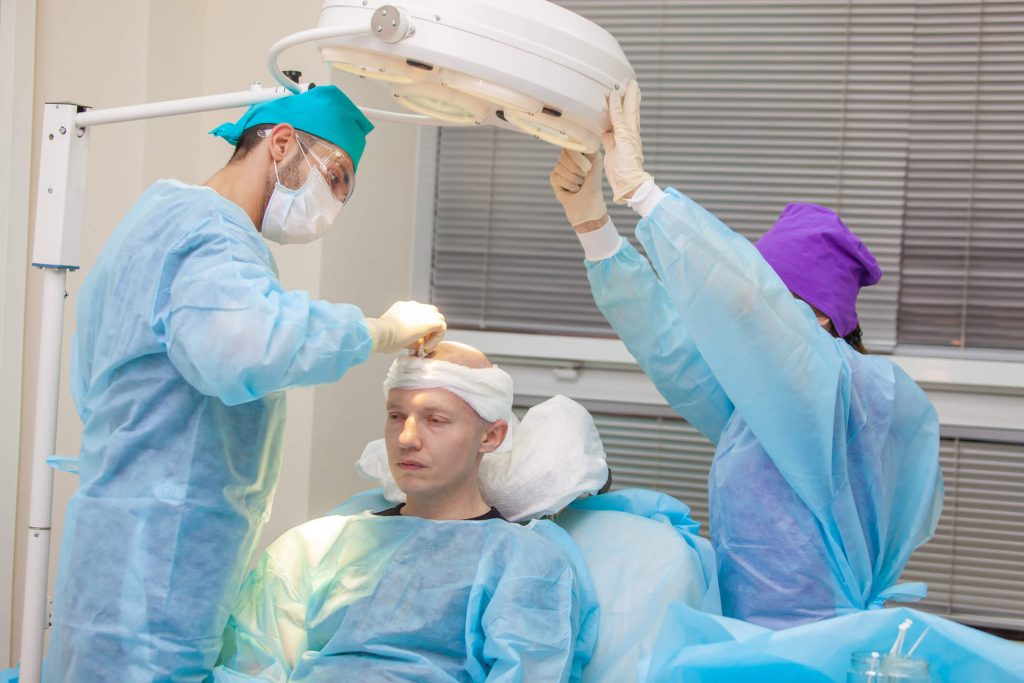Does getting a hair transplant hurt? It is a question that many patients ask.
Although this is a frequently asked subject, most people report that hair transplants are usually painless. Most patients report that surgical hair restoration is less painful than visiting the dentist, according to the ISHRS. “I am extremely squeamish with a low pain tolerance, but the procedure wasn’t painful,” stated one of the patients.
But if you’re more sensitive to discomfort and pain than most people, you might be concerned about how painful your hair transplant procedure would be. When you consider the various hair transplantation procedures available, there isn’t always a single process that works for everyone.
However, you can be more prepared by knowing how hair transplant surgery operates and what to expect throughout the healing process.
Understanding the Hair Transplant Procedures
FUE (Follicular Unit Extraction) and FUT (Follicular Unit Transplantation) are the primary hair transplant procedures.
During FUT hair transplants, the healthy hair follicles from the donor area are divided into individual hair grafts and inserted into the affected area in tiny strips. During a FUE transplant, the surgeon separates and inserts individual hair follicles into the damaged area.
Because FUT hair transplants are more invasive than FUE hair transplants, healing and recovery time will probably be longer. There is considerable scarring as well. The FUE hair transplant heals more quickly—between three and seven days—and leaves little to no scars.
Due to the different healing times and procedures, FUT is often considered a bit more painful than FUE overall. Nevertheless, since local anesthesia is used during both surgeries, there isn’t much pain involved.
What can I expect in terms of pain during a hair transplant?
Pain during a hair transplant procedure can vary depending on individual pain tolerance, the technique used, and the surgeon’s skill. However, most patients report minimal discomfort during the procedure due to the administration of local anesthesia.
During the initial phase of the procedure, you may feel a slight pinch or sting as the anesthesia is injected into the donor region (usually the back of the scalp). Once the anesthesia takes effect, you should not feel any pain during the extraction of hair follicles or the placement of grafts.
Some patients may experience mild discomfort or pressure during the procedure, particularly during the placement of grafts or when the surgeon is making incisions in the recipient area. This sensation is often described as similar to having your hair pulled gently.
After the procedure, it’s normal to experience some soreness, swelling, and tenderness in both the donor and recipient areas. Your surgeon will provide instructions for managing discomfort, including over-the-counter pain medication.
Overall, while discomfort during a hair transplant is typically minimal, it’s essential to communicate openly with your Newport Beach surgeon about any concerns or discomfort you may experience during or after the procedure. They can adjust pain management strategies to ensure your comfort throughout the process.
Pre- and post-hair transplant surgery pain management
There’s no getting around the fact that hair transplantation involves surgery, so you should be prepared for some minor discomfort.
Whatever procedure you are having, the surgeon will give you local anesthesia before the operation. It numbs the affected area to lessen the patient’s pain. The actual surgery is painless. However, some patients find the injection a bit painful.
Some people claim that there may be discomfort during the procedure. Patients are awake and fully aware of what is happening throughout the procedure. Pulling or tugging may occur during the procedure. Nevertheless, this is typically uncomfortable instead of painful when using local anesthesia.
What to do with post-hair transplant pain?
The actual treatment shouldn’t hurt, but once the anesthesia wears off, the scalp could feel sensitive and uncomfortable. Due to the stress on the scalp tissue, redness and mild swelling following the hair transplant will unavoidably occur in the first few days. The time it takes for wounds to heal tends to increase with the number of grafts received.
Patients can take mild medications to help with any discomfort or pain following surgery. These include tetracycline to prevent infection, prednisolone to minimize swelling, and paracetamol to relieve pain. Your discomfort should go away in a couple of days.
Things are essentially easy from this point on. In a few months, you should be able to enjoy the pain-free growth of your new hair on your scalp.
Can I speed up the healing process following a hair transplant?
Post Peel Gel and RégimA Post Laser promotes quicker healing of hair transplants and less redness. In addition to preventing crusting and hastening the healing process, the gel retains moisture. It is safe to apply on even newly healed burns and lessens post-operative scabbing.
It’s critical to follow the instructions provided to you following hair loss surgery and to limit your contact with the healing area. To prevent recovery disruption, you should exercise care when exercising or playing sports following surgery, wear headgear following the procedure, and wash your hair after the transplant.
Is there any persistent pain after transplant surgery?
Though extremely uncommon, a small percentage of hair transplant patients experience post-operative problems. These problems may result from trauma to the transplanted area or infected grafts. See your hair transplant doctor if your grafts are still painful and tender, even after two weeks, or if you have concerns about them not healing properly. When necessary, they will be able to assess your progress and recommend any additional treatments.
Adhere strictly to your doctors post-operative directions to reduce the chance of issues with your hair transplant. It entails finishing entire sets of medications, such as antibiotics, and taking any prescribed medications as directed. Find out more about what to do in the event of an infection.
Is a hair transplant painful?
The pain associated with hair transplant procedures is minimal and usually disappears quickly. Therefore, if you’re concerned about pain, there’s no need to look for hair transplant alternatives. You can return to your regular life with little discomfort because the surgical procedures and recovery periods are usually brief.
Restoring their hair and confidence is well worth the small cost for most patients.
Is an FUE hair transplant painful?
The most straightforward response to the question is no!
One of the most advanced hair transplant procedures is the FUE technique. This method removes individual hair transplants containing one to four hair follicles from a donor area. After their extraction, the hair grafts are implanted into the target area’s tiny incisions. To ensure optimal comfort, your surgeon will administer local or general anesthesia. The FUE hair transplant is often not unpleasant, though it may initially cause discomfort due to the anesthetic and less intrusive method.
Thus, you may rest certain that you need not worry about the degree of pain associated with a hair transplant procedure.
Is a FUT hair transplant painful?
A whole hair strip from the back of your head is removed and transplanted using the FUT hair transplant technique. This procedure could hurt quite a bit more because it is far more intrusive than FUE. To minimize your pain, your surgeon will administer local anesthesia.
To find out what type of hair transplant technique our clinic uses for your needs, call (949) 644-1641 to schedule a consultation.
Hair transplant pain after surgery
Following your hair transplant procedure, you will need to take care of the donor and transplant areas. Because of the extraction and incisions, you must allow your scalp time to heal. Due to this healing process, you may have mild discomfort or pain following your hair transplant procedure. Your pain level and the hair transplant process will typically determine how painful the procedure is for you after that. But it shouldn’t be too much pain for you to bear or too disturbing.
Right after the surgery
You will be in the most agony immediately following your hair transplant procedure. There may be a stinging feeling in the donor and transplant areas. This first pain can be relieved using medication. After surgery, you can experience some neck and head pain for a week. But these ought to be far less painful than the pain you felt just after the procedure.
Seven days following surgery
A week following the procedure, you may still have slight discomfort in the area of the donor and transplant site. However, this is generally due to your scalp becoming more sensitive. You can experience some stinging or itching on your scalp.
FAQs
Here are some frequently asked questions.
Will I be numbed completely during the hair transplant procedure?
Yes, local anaesthetic ensures the scalp is fully numbed before the hair transplant procedure begins. This numbing sensation helps minimize any discomfort or pain during the surgery.
Will there be any pain or discomfort when the transplanted hairline starts to grow?
Some patients may experience mild discomfort or itching around the hairline as the transplanted hair follicles grow. It is a sign of healing and hair growth and can be managed with gentle care and prescribed medication.
Is there a difference in pain between FUT (strip) and FUE hair transplant procedures?
FUT and FUE procedures involve local anesthesia to numb the scalp, so the pain level experienced during the procedure is similar. However, hair transplant recovery experiences may vary between the two techniques, with FUE typically resulting in less post-operative discomfort and a quicker recovery.
Will I need pain medication after the procedure?
While some patients may require pain medication to manage discomfort during the initial days following the procedure, many find that over-the-counter pain relievers are sufficient. Your plastic surgeon will guide pain management based on your individual needs.
Book A Consultation With Neograft Hair Restoration Orange County
It is tough to undergo a hair transplant treatment without feeling some degree of pain. Schedule a free consultation with Neograft Hair Restoration Orange County if you have any questions about what to anticipate before and after a hair transplant. It will allow you to get all of your questions answered.
Call our clinic at (949) 644-1641 to schedule your consultation.















Recent Comments